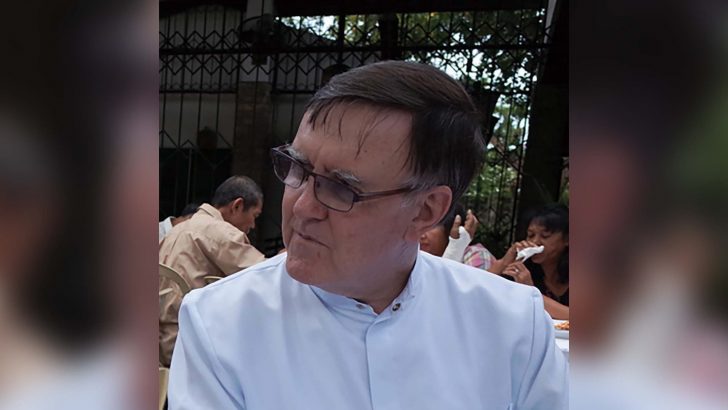Personal Profile
Fr Sean Coyle and Fr Donal O’Hanlon are retired Columban missionaries who are now based in Dalgan Park, Co. Meath. Both spent the vast majority of their ministry in the Philippines, where they encountered both tragedy and fulfilment in the turbulent state. The two priests were involved in the Legion of Mary before and after leaving Ireland and reflected on their experiences of the legion in both the Philippines and Ireland and why the organisation is held in such significance by them both.
Fr Coyle recalls his initial interactions with the legion in the Philippines and the work he undertook, “I was involved with the legion in my early years in the Philippines…I was in a parish presidium in my first parish and then I was a college chaplain”, he told The Irish Catholic. “Most of the students were from poor backgrounds; not destitute because they were at college but just of very modest means. I used to do mainly hospital visitation and some house-to-house visitations”.
Involvement
But, as he reveals, involvement with the legion in the Philippines could quite often expose the harrowing deprivation in the country, “I remember one time, some of the praesidium found two children who were starving and we got them to hospital”, he begins. “Sadly, a boy of five years of age died and I buried him on Christmas Eve. The saddest thing of all was that he never once smiled when he was in hospital. His sister, I thought she was an undernourished seven-year-old when she was actually 12, she died the following September”.
Most of the women in the hostel would be homeless, some temporarily but all for different reasons”
When asked if there were any differences between Irish and Filipino praesidia drawing from their experiences of both, Fr Coyle and Fr O’Hanlon both agreed that, “the membership would be much younger” [in the Philippines]. “Oh, yes. Much, much younger”, Fr O’Hanlon confirms. “I was in a city parish and I set up two new praesidia”, he explains. “Usually, I would have about seven men and seven women. They would usually be in their 30s and 40s. It was much easier to get legionaries there than here. I was in the Legion of Mary before I went to the Philippines in a small, rural parish. The work was the same, visitations, catechetical work etc,” he recalls.
When queried on why he believes the legion met such resounding success, Fr Coyle attributed it to the legion’s principles that were imbued with an unwavering emphasis on Christian ethics, “the legion was a classless movement from the beginning”, he says. “The first president, Mrs Kirwan, she was a widower from New Zealand and Frank Duff wrote years later that she was the poorest in the very first group and he was happy that she was. You had people involved in government in Ireland; senior civil servants and very ordinary people in the Legion. In the legion, you all address each other as brother and sister in the praesidium meeting”.
Remarkable
Fr Coyle, like most who have followed the remarkable life of Frank Duff, marvels at the man’s ground-breaking philosophy, a philosophy that he says was dismissed by many at the time, but was vindicated in the subsequent reform that accompanied the Second Vatican Council, “he was a pioneer in ecumenism with Protestants and also a pioneer in inter-faith dialogue with Jews in Dublin when it was frowned upon. His vision was that every Catholic by virtue of Baptism had a responsibility to be part of the mission of the Church. That was not understood by many and yet that was the vision of the Second Vatican Council”.
Fr Coyle continues, “he insisted that if unmarried mothers wanted to keep their child they should be enabled to do so. The Regina Caeli hostel was largely for unmarried mothers, most of whom came from very poor backgrounds. He was way ahead of his time”.
The Regina Caeli’s work is something that Fr Coyle is informed of as he is spiritual director of the praesidium of Regina Caeli in Navan. This has enabled Fr Coyle to fully immerse himself in the charitable conceptions of the legion and gain an insight into why these initiatives were originally introduced by the legion.
“Most of the women in the hostel would be homeless, some temporarily but all for different reasons. Some of them are immigrants. Some of the indoor sisters and brothers are people who are full-time, live-in, voluntary legionaries. Since I became involved four years ago, I have seen indoor sisters from Pakistan and Austria,” he says.
When asked about the influence that the Legion of Mary currently holds within the Church in Ireland, Fr Coyle was quick to underline the legion’s importance in the country’s capital, and believed that the key to the legion’s longevity is on account of its attraction to Catholics from all around the world.
Fr Coyle attributed it to the legion’s principles that were imbued with an unwavering emphasis on Christian ethics”
“In Dublin, there are younger legionaries…One man, Emmanuel Burke, is principal of a boys’ Catholic school in Dublin and is totally involved with the legion. I think it has brought out that sense of being evangelised”.
“Some of the legion families I know are raising their families with a very living faith. The legion in Navan, prior to Covid, had adoration of the Blessed Sacrament once a month. This was mainly for pre-teens and parents. The one giving the catechises was from Pakistan and there is also a French couple who are involved”.
Although both priests are currently enjoying their retirement in the home of the Missionary Society of St Columban in Ireland, both are still heavily involved in the legion in Navan and eagerly attend related events. Fr Coyle also continues to deputise in the parish of Johnstown and Walterstown when necessary.


 Fr Sean Coyle
Fr Sean Coyle 